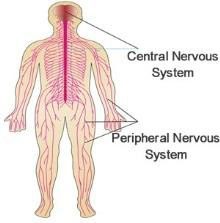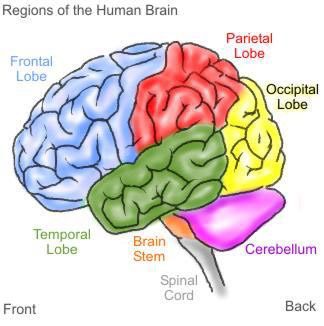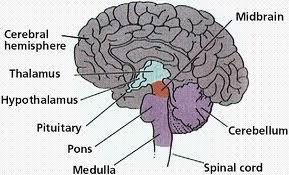- The brain is the key part of the central nervous system that controls our entire body. It controls our breathing, our beating heart, our ability to use our senses, how we receive and gather information, and even our behaviour and personality.
- The brain has 100 billion brain nerve cells (neurons). These cells communicate with one another and to other parts of the body by sending out messages.
- The messages are sent by electrical and chemical activity.
- Seizures are caused when the brain cells (neurons) have an uncontrolled burst of electrical/chemical activity. The type of seizure displayed depends on which part of the brain is affected. It could be a partial seizure (involving part of the brain) or generalized seizure (involving the whole brain).
- Neurology is the study of the human nervous system (brain and spinal cord and peripheral nerves).
- A neurologist is a specialist who treats people who have neurological diseases such as epilepsy.

- The brain is divided into six main regions: the frontal lobe, parietal lobe, occipital lobe, temporal lobe, cerebellum and brain stem.

The frontal lobe: regulates decision making, our ability to solve problems, controls our behaviour, emotions and directs our personality
The parietal lobe: receives and processes sensory information such as touch, pressure, temperature, and pain. It is also involved with language comprehension.
Temporal lobe: regulates memory, hearing, language/ learning and speech comprehension.
The cerebellum: controls our balance, movement, and coordination Occipital lobe: controls visual perception and processes visual information
Brain stem: is made up of the midbrain, pons, and medulla. The brain stem is responsible for all involuntary actions that keep us alive, for example our breathing, food digestion, our heart beat, and circulation of our blood. The brain stem connects the brain to the rest of the body through the central nervous system.
Deep within in the brain are the thalamus, corpus callosum, the hypothalamus, and pituitary gland.

Thalamus: relays sensory information to other parts of the brain.
Corpus callosum: connects the right and left sides of the brain and ensures communication between the two sides.
Hypothalamus: Controls body temperature, thirst, hunger, and emotions
Pituitary gland: controls hormone levels
Disclaimer: this fact sheet is for education purposes only. Please consult your doctor or other health professional for advice regarding your epilepsy.